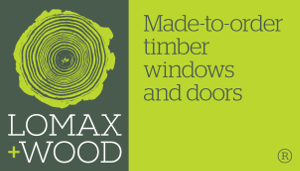The Ultimate Guide to Timber Casement Windows
Posted: 28 January 2023
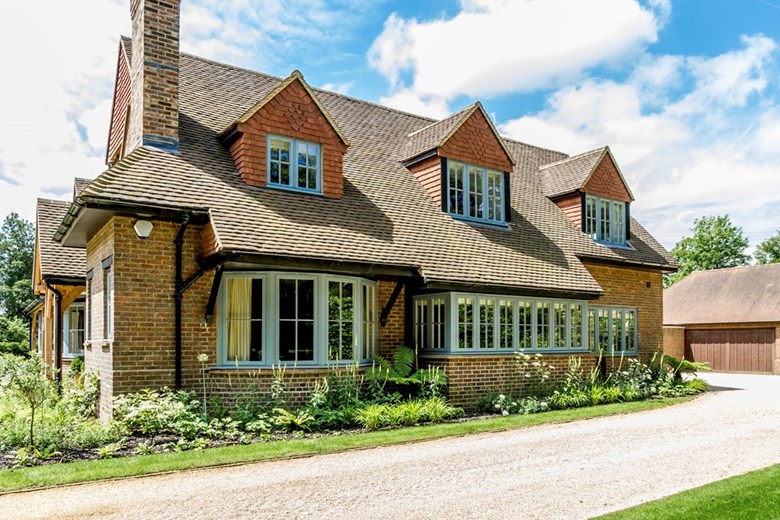
Despite the wealth of choices in terms of alternative materials and designs available today, timber casement windows remain one of the most popular choices. A timeless classic in terms of design, a casement window does more than look good. It is also a window option that is energy-efficient, cost-effective and made from sustainable materials.
Visit our page for more images of our bespoke casement windows.
Types of Casement Wood Windows
Wooden casement window designs started appearing in homes in the UK in the late 1700s.
Before that, homes had mainly used iron frames, but even 250 years ago, it was appreciated that using a wood window casement provided a more sustainable and affordable alternative.
So what is a casement window, exactly? It is a window that is either fixed in place or opens on a hinge, either from the side or the top. Many larger casement windows encompass different panes that open differently. For example, a large fixed casement with a side-hinged pane beside it and a narrower top-hinged pane above.
There are all sorts of design options when it comes to wood casement windows that go beyond whether and in which way they open. For example, the earliest timber casement window fitments saw them fitted flush to the frame. These early designs had some flaws that led to the ingress of water.
It inspired designers to come up with what has become known as the “stormproof” casement window. These incorporate a lip that sits proud of the frame and provides extra protection against water and draughts in changeable weather conditions. Stormproof casement window types were seen as a great leap of progress in the 1950s, and homeowners rushed to replace their leaky old flush casements with these modern designs.
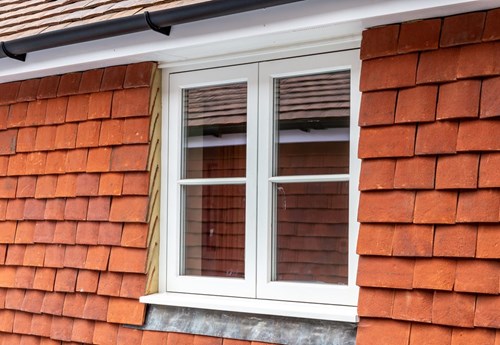
Today, it is a different story. Window technology has advanced, and timber casement windows can be flush and be just as weather-proof as the lipped variety. Both are still available, and their only real difference is an aesthetic one. Some owners of period properties that had their original flush windows ripped out and replaced by “stormproof” ones in the1950s might today want to go back to flush casements for a more traditional appearance. Flush windows can provide a sleeker profile on modern properties, and too, it is purely a matter of preference.
Whichever you choose, you can configure your wooden casement windows any way you please in terms of which panes are hinged and on what sides. You can also opt for extra detailing, such as glazing bars to keep your casement timber windows in keeping with a period property or other properties in the neighbourhood.
Hardwood or Softwood Casement Windows?
One of the most common questions is choosing hardwood or softwood windows. Today, the one-word answer to this question is yes. That’s not a huge amount of help to you, so let’s take a step back and be clear about the differences between the two.
Hardwood comes from slow-growing trees. It is naturally strong, dense and durable, so it is ideal for withstanding extreme weather conditions. It is naturally resistant to warping, swelling or shrinking and does not usually need additional preservative treatment. The only downside to hardwood is that it is a challenging material to work with.
Softwood is more cost-effective and easier to work with than hardwood. Little surprise, then, that it makes up about 80 percent of all the timber used in the world. Softwood is highly versatile and comes from fast-growing cone-bearing trees such as pine and larch. Softwood casement windows are manufactured from laminated and finger-joined timber to give them extra strength and durability.
From these descriptions, hardwood represents the best and most durable solution but will be more expensive than softwood. With today’s preparation methods, however, softwood is just as long-lasting. It also has the benefit of a silky smooth finish.
Choosing between softwood or hardwood casement windows has nothing to do with compromising between cost and quality. Both provide durable and reliable casement windows that will last for decades. The real decision point is one of aesthetics. Softwood frames should be painted, while with hardwood, you can simply use a wood stain and admire the wood's natural grain. The question to ask yourself is which will look best on your home.
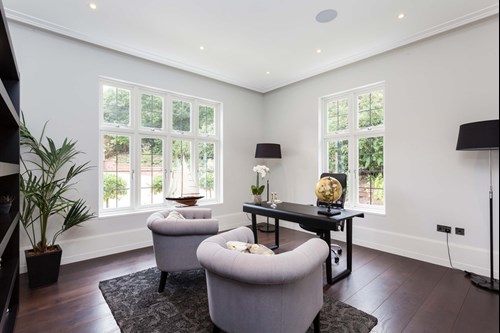
Sustainability is Our Priority With Our Casement Windows
Choosing a wooden window casement is arguably the most sustainable option of all the materials available today – provided that it is sustainably sourced. That’s one point you can rest assured of when you buy your timber casement windows from Lomax + Wood. Our FSC® Chain of Custody commitment ensures that the materials themselves are sustainably sourced and that every step in the process, from sourcing to installation, has sustainability and FSC compliance at its core.
In case you have not heard of it before, this means all products and processes at Lomax + Wood are certified by the Forest Stewardship Council (FSC), a non-profit organisation that sets the benchmarks for forestry in terms of sustainability and social welfare—being FSC compliant means meeting the gold standard for ethical production.
The timber used at Lomax + Wood is only harvested from forests that are responsibly managed, environmentally conscious and socially beneficial.
Benefits of Timber Casement Windows
We know you have a vast range of choices in terms of both the type of windows (sash, sliding, gable) and the materials from which they are made (metal, uPVC). But casement timber windows bring specific benefits over other options.
Durability
Whether you opt for hardwood or softwood, timber framed windows are naturally durable and robust. By choosing high-quality casement wooden windows from Lomax + Wood, you are making an investment that will last for decades. A 60-year lifespan is nothing unusual and is about three times the lifespan of uPVC alternatives.
- Cost efficiency
At first glance, you might think uPVC windows are a lower-cost option. That’s true in that they generally cost about 70 percent as much as wood. However, uPVC will generally last for about 20 years, while a wood casement window can be expected to last three times as long, provided it is properly maintained. Over the average lifetime of the window, uPVC actually works out to approximately double the price of wood!
- Value adding
You might argue that the above is only a benefit if you are planning to stay in the home for the next 60 years. However, that is not the case. Ideal Home reported in 2022 that adding new timber casement windows can add 10 percent to the value of a home. In the same report, they noted that replacing traditional casement windows with uPVC could devalue a period property to the tune of £12,000. Even if you intend to move in the medium term or are simply looking to “flip” a property, the value-adding benefits of wooden casement windows make them a compelling choice.
- Timeless aesthetics
Whether you live in a period property hundreds of years old or a new build with a contemporary 21st-century design, taking the timber casement window route is a choice that never looks out of place. Other materials and window designs tend to change with the times, and some can soon make a property look dated in the worst way possible. We have all seen those houses that were modernised in the 1970s or 80s and have not been touched since. Designs that looked fashionable and modern then are a real eyesore today. That doesn’t happen with a timeless casement window design in painted or stained wood.
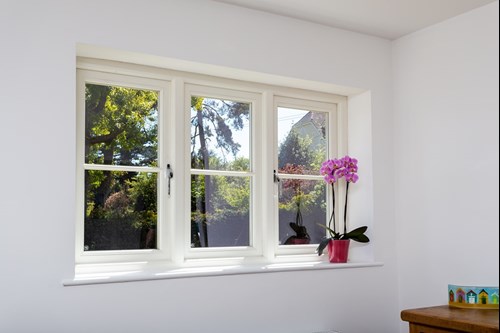
- Energy efficiency
We all need to take energy efficiency seriously today for the benefit of the planet and our bank balances. Timber casement windows are the obvious choice if you are looking at ways to enhance your home’s carbon footprint and keep your heating bills from becoming too painful in winter. High-quality wooden casement windows are the best choice for keeping out the cold and draughts. Researchers have calculated that the average 3-bedroom homeowner will save £212 on heating bills by fitting new wood casement windows.
- Reliable performance
As a material that has been in use for making casement windows since the 1700s, we have seen many technological advances along the way when it comes to casement window wood. When you choose a high-quality supplier that provides bespoke made-to-order window casements, you can be confident that they will withstand anything the British climate can throw at them. Strong winds, driving rain, or arctic blizzards, you can watch it all unfold outside while enjoying the protection and insulation of your new wooden casement windows.
- Easy maintenance
Today’s casement window timber requires very little maintenance to deliver decades of reliable performance and a high-quality appearance. Once installed, it is just a case of regular cleaning, annual lubrication of moving parts such as window latches and repainting or stained, depending on the type of wood, every five to ten years.
- Better ventilation
Nobody ever thought there was a positive to old draughty windows. However, modern materials are such effective insulators that indoor air quality is becoming an increasingly problematic issue in the 2020s. Lomax + Wood casement windows are ideal for better ventilation as you have many options to choose from in terms of opening windows. Best of all, depending on the timber window frame detail you choose, you can have vents that provide ample airflow without compromising security. Ideal if you are concerned about keeping intruders out or acrobatic youngsters and pets in!
Lomax + Wood – Your Natural Choice For Wooden Casement Windows
We have shown how a wooden window casement makes sense for various reasons, ranging from performance to aesthetics to lifetime cost to sustainability. But it is important to remember that wood is a unique material. Quality can fluctuate dramatically depending on the source of the wood and the way it is prepared.
The same applies to the installation itself. Cutting corners with amateur installation or cheap, low-quality materials can be a recipe for disaster, resulting in ill-fitting windows that deliver none of the benefits we went through earlier.
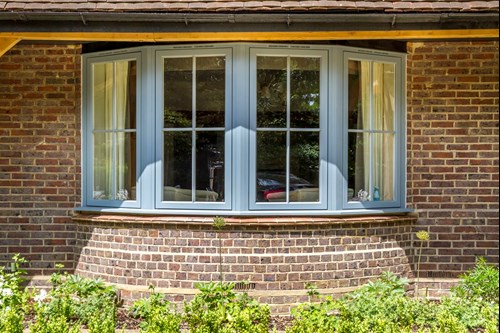
Lomax + Wood has been in the business of supplying timber casement windows in the UK for decades. In fact, for Chris Wood, it is in the family’s blood, and his father, Dennis Wood, first started designing and fitting premium-quality timber windows more than 60 years ago. When you choose timber casement window details from Lomax + Wood, you can be assured of the following:
- Eco-friendly materials and practices that are FSC 100% certified.
- Made-to-order traditional casement window details that are manufactured to your exact specifications.
- Installation by skilled and experienced artisans with decades of experience between them.
- Completely customisable, with the widest possible choice of paint or stain colours and a range of handles, stays and other window furniture to perfectly capture the character of your home.
- Easy-clean hinges so that your windows open and close as smoothly as new for their entire lifetime.
- Highly secure locks and handles that meet the latest safety certification requirements.
- Glass is fitted from the interior side only for extra security.
- Secure night vents for fresh air without unlocking the windows.
- Child safety locks and restrictors to keep youngsters safe.
- Different glazing options to meet individual needs and priorities as well as any local planning regulations.
Common Questions For Casement Windows
What are the different types of timber casement windows?
There are several types of timber casement windows, including single-hung, double-hung, awning, and hopper windows. Each of these types of windows has its own unique features and advantages, and the best choice for your home will depend on your specific needs and preferences.
What is the main drawback of a timber casement window?
One of the main drawbacks of a timber casement window is that it can be quite heavy and difficult to open and close. This can be especially challenging for older or less physically able homeowners.
How long will a wooden casement window last?
The lifespan of a wooden casement window can vary depending on several factors, including the quality of the materials used, the level of maintenance, and the climate. With proper care and maintenance, a wooden casement window can last for many years, potentially even decades.
What is the difference between casement windows and sash windows?
A casement window is a window that is hinged on one side and opens outward, typically using a crank mechanism. A sash window, on the other hand, is a window that consists of one or more movable panels or 'sashes' that can slide up or down within the frame of the window. The main difference between these two types of windows is the way in which they open.
What style of house would suit wooden casement windows?
Wooden casement windows can be suitable for a wide range of architectural styles, including traditional, Victorian, and Arts and Crafts. They can also be appropriate for more contemporary designs, depending on the house's overall aesthetic.
